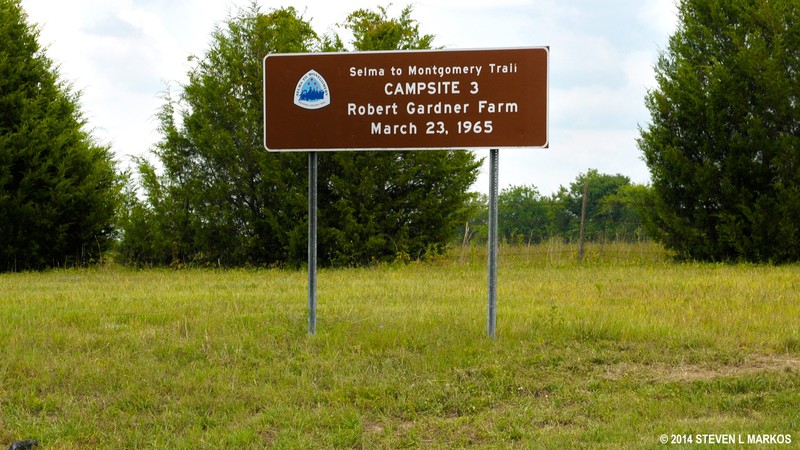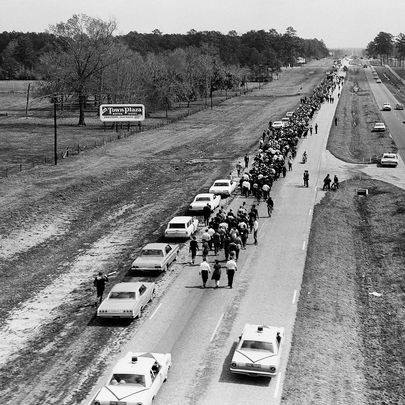Robert Gardner Farm
Introduction
Text-to-speech Audio
Images
The third campsite used by the marchers was the Robert Gardner Farm On Highway 80. This campsite along with three others was prearranged to provide the marchers a place to rest and to tend to any wounds.

In the Selma to Montgomery march, thousands of people from all over the country walked 54 miles from Selma to Montgomery to fight for voting rights.

Backstory and Context
Text-to-speech Audio
Between March 21-25, 1965, voting rights activists in Alabama had embarked on their third march of the month. The first march ended when violence erupted at the Edmund Pettus Bridge on March 7 as the activists attempted to cross it; the activists attempted to cross the bridge a second time on March 9 but the marchers were blocked by the police once again. The distribution of news footage of the violence that occurred on March 7 and the report that someone had killed a minister after the second march, turned national attention to the voting rights struggle. After the violence of the first two attempted marches, Dr. Martin Luther King Jr. called on the nation to come to Alabama to support their cause. In response, thousands of people, Black and white, came to Alabama to participate in the march.
Along with the prearranged campsites, the marchers were guaranteed federal protection as they began this third march. After the violence of the other two marches, King saw a need to seek assistance from the federal government if he wanted the marchers to make it to Montgomery. In exchange for protection, the federal government would only allow a certain number of marchers to enter Montgomery. King made this one concession. This time the marchers crossed the Edmund Pettus bridge and were concluding day three of the march when they arrived at the Gardner Farm after travelling approximately between 10 and 12 miles that day. The following night the marchers would stay at the City of St. Jude. Robert Gardner’s farm, as well as the other campsites can be located along Highway 80 to this day.
On day five of the march, the limited number of marches made it to Montgomery after walking a total of 54 miles from Selma. On the steps of the capital, Martin Luther King Jr. delivered his “How Long, Not Long” speech in which he recalled the African American’s struggles throughout history. Months later on August 6 President Johnson passed the Voting Rights Act of 1965. These two achievements signified a shift in the African American’s history from a one of struggle to one of victory.
Sources
http://npplan.com/national-historic-trails/selma-to-montgomery-national-historic-trail-trail-at-a-gl...
"Selma to Montgomery National Historic Trail Alabama." nps.gov. Accessed on November 15, 2017. https://www.nps.gov/nr/travel/cultural_diversity/Selma_to_Montgomery_National_Historic_Trail.html
